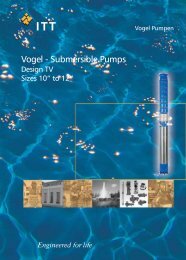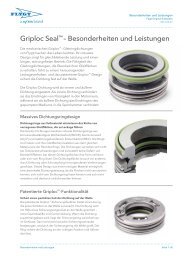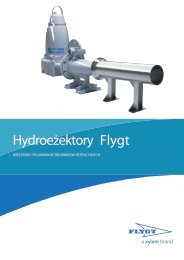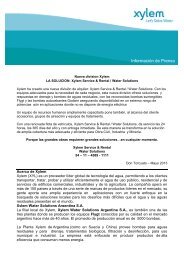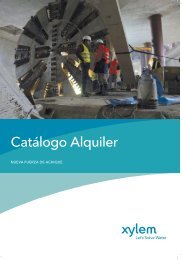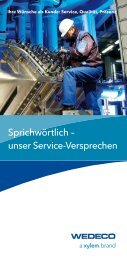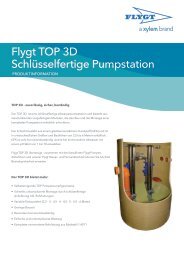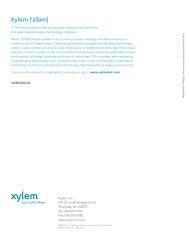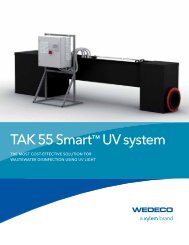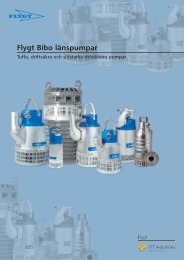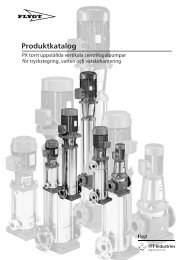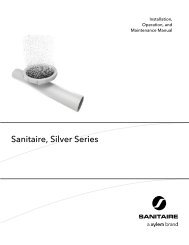Computational fluid dynamics - Flygt
Computational fluid dynamics - Flygt
Computational fluid dynamics - Flygt
Create successful ePaper yourself
Turn your PDF publications into a flip-book with our unique Google optimized e-Paper software.
What is CFD?<br />
Introduction<br />
CFD is a sophisticated computer-based design and<br />
analysis technique. Using CFD, we can build a computational<br />
model that represents a system or a device<br />
that we want to study. We then apply the general <strong>fluid</strong><br />
flow equations to predict the flow field and related<br />
physical phenomena. In general, CFD gives us the<br />
power to simulate turbulent <strong>fluid</strong> flow, heat and mass<br />
transfer, multiphase flows, chemical reactions, <strong>fluid</strong>structure<br />
interaction and acoustics.<br />
The first CFD codes were developed for the aerospace<br />
industry in the 1960s. Since then, the use of<br />
CFD has spread to all industries that deal with <strong>fluid</strong><br />
mechanics directly or indirectly. Today, other major<br />
industrial users of CFD include automotive, power,<br />
turbomachinery, chemical, environmental and many<br />
other industries.<br />
Almost all CFD codes are based on the Navier-<br />
Stokes equations, which arise from the application of<br />
Newton’s second law to <strong>fluid</strong> flows. These are general<br />
governing equations for any type of <strong>fluid</strong> motion,<br />
but they can only be solved analytically for laminar<br />
flow or for a few very simple geometries in turbulent<br />
flow. Since most engineering problems involve turbulent<br />
flow and fairly complex geometries, the flow<br />
equations have to be solved numerically.<br />
the computational cells has to be smaller than the<br />
length scale of the smallest turbulent eddies for an<br />
exact solution, which in most cases is impractical.<br />
For this reason, the CFD codes use time-averaged<br />
equations such as the Reynolds-averaged Navier-<br />
Stokes equations (RANS) when modeling turbulent<br />
flows. With this approach, the turbulence is modeled<br />
for sub-grid scales. There are different turbulence<br />
models available depending on the flow<br />
characteristics.<br />
The exact numerical solution of the Navier-Stokes<br />
equations for turbulent flow is extremely demanding<br />
because of the wide range of time and length<br />
scales involved in turbulent flow. In fact, the size of<br />
Achieving lowest total cost of ownership<br />
When designing a pump station, our goal is to help our<br />
customers to achieve the lowest total cost of ownership.<br />
We always try to make the pump station as small<br />
as feasibly possible to minimize the investment cost.<br />
We analyze operating conditions and advise the best<br />
operating strategies to minimize the energy costs. We<br />
also address possible issues with sediment or floating<br />
debris to eliminate, or at least reduce, the costs related<br />
to cleaning and maintenance. CFD analysis is often a<br />
critical factor in achieving these objectives, as we explain<br />
throughout this brochure.<br />
3



